One of the most unusual plants, indispensable in the creation of delightful flower compositions, is the flower of the bunny ears. The leaves of the charming plants have a fluffy white-nasy raid, which is why they resemble the soft ears of the animal. Sometimes the flower is called sheep or lamb ebes. The botanical name of the original culture is purity of woolly or Byzantine. This is a decorative perennial of the family of Clanotkovaya, in the natural environment inhabited in coniferous and mixed forests. Unpretentious flower - a welcome guest on any summer cottage. The decorative appearance of the flower allows you to create magic compositions where the purple looks like a silver fluffy carpet, against the background of bright and colorful plants. Woolen bushes not only decorate the household sections, but also grown in order to obtain medicinal culture, since the healing properties of the harassic ears are widely used in traditional medicine.
Plant Write ears: Description and varieties
Cleancier woolly or in the people of "Hare ears" - a low grassy long-term culture with aqueous color-shaped pattern. Flower with sizo-green leaves most often grows in a moderate climate zone. It can be found in the Caucasus, in Europe, in the Crimea and in America.
Botanical Description of the Plant Hare Ears
- Herbaceous bush rarely grows above 20 cm in height. The bloomer has a high stem that is pulled up to 60 cm.
- The inflorescence is of the shape of the spoos of 1 cm in diameter, it blooms with small inconspicuous pinkish-lilac flowers. Beginning of flowering inflorescences - June and continues until September.
- Special attractiveness and decorative plant give the oblong form opposite thickened leaves. The color of the leaf is green, with a slight Sizem, who gives them small villi, creating a felt effect. Externally, the leaves resemble the "woolen" ears of the animal. They are soft and velvety, they are very pleasant to touch them. At the base of the leaves are collected in a socket.
- Root vertical, powerful.
- Fruit of floating ears flower - triangular nuts.
Cleaning woolly has several decorative varieties that are most common in our region:
- Silver Carpet - Grade is good in group landings. Silver dense bushes, landed by a group, create a stunning effect of a soft and fluffy silver rug. Buckets are low, up to 15 cm in height, does not form inflorescences.
- Sheila Macqueen is a variety named after the famous florist. The plant is low, does not form inflorescences.
- Cotton Ball - the variety forms low inflorescences, in appearance resembling cotton boxes.
- Striped Phantom is a spectacular variety, the main feature of which, the presence of wide light strips on the pubescent leaves.
- PRIMROSE HERON - Green fluffy leaves of this variety by autumn acquire a shade of yellow. Flowers with pink small flowers.
- Big Ears is a beautiful and charming grade with large leaves, up to 25 cm long. Externally, the leaves are really similar to big velvet bold ears.
- Silky Flece - low-grade culture with small fluffy leaves up to 10 cm long.
Hare ears - healing properties
Hare ears - a decorative plant that is successfully used as a medicinal grass. Healing properties possess both stems, leaves and flowers. They contain a large concentration of essential oils, tanning substances, pectins and flavonoids. Also, the plant is rich in the content of vitamin C, organic acids. Thanks to the rich composition of the bunnies, the ears are used to treat many diseases:
- The infusion of the root of the plant has a spasmolytic effect, relieves inflammation.
- The infusion of the dried leaves of the purity of the woolly is used in diathesis, gout, gold, as a means for treating skin diseases.
- Fresh leaves are applied to wounds, cuts, bruises. Thus, quickly stopping bleeding. The applying of the leaves of the holy ears is anesthetically affected and removes inflammation in it.
- The plant is successfully applied during the period of labor, helps in stimulating the contraction of the uterus, has a hemostatic effect.
- Alcohol tinctures are effective in treating the nervous system as a sedative.
Contraindications and side effects of harass
Despite the wide range of plants, the purity cannot be used to treat people suffering from hepatitis, chronic kidney disease, bronchial asthma.
How to plant harassy ears in the garden
For planting plants, you should choose solar or slightly shaded, at midday time, plot in the garden. Cleaning woolly feels well in dry zones. Excessive humidity is destructive for the root of the plant, and the leaves lose their decorativeness and the main feature is the downstream.
Soil for planting should be well drained, light, alkaline or neutral acidity.
Stages of landing:
- Plot for planting seedlings are preparing in advance. It should be switched and make fertilizers: 20 g of potassium sulphate and 50 g of superphosphate.
- In May, the holes are digging, a depth of 30 cm.
- The bottom of the wells is filled with drainage from pebbles, pebbles, crumples and sprinkled with earth mixed with humus.
- The seedling is placed in the landing hole and pour the earth.
Hare ears: care
The plant attracts flower and summer residents not only by the original appearance, but also incredible unpretentiousness in cultivation:
- The flower remarksably tolerates drought and does not need abundant frequent watering. It will be enough to pour bushes once a week, while not affecting the water of the leaves. In the arid summer, the irrigation frequency increases to 2 times a week to eliminate the dropping of foliage.
- Falker plants are made 1-2 times a year, in the spring period. Apply organic fertilizers (chicken litter, cow manure), mixed with ammonium nitrate. The organic can be replaced by complex fertilizer.
- After landing, to avoid the growth of weed grass, the bushes are plunged, periodically loosen the land on the plot where the bold ears grow.
- The plant grow pretty quickly, exciting new territories. To avoid unwanted grass growth, remove extra bushes.
- The inflorescences that are flowing are subject to trimming, as ripening buds can lead to a decomposition of a bush and loss of its decorative species.
- As the plants are growing, empty sections appear in the center of the deciduous socket, which violate the integrity of the landing. Experienced flowers are recommended to periodically mite young seedlings in the "propershin" sites to return the group landing of the Ware Beds to the former luxury and a beautiful appearance.
- Cleaning woolly stable frost, but in a harsh winter requires shelter. When tangled, the shelter is removed to avoid the root.
Reproduction of harassy ears
Slap ears are easily reproduced both vegetative and seed method.
Reproduction of harassy ears seeds
- Seeds of the flower of the banging ears can be bought in a flower shop. They are singered to seedlings in March, using spacious sand and peat container. Before boarding, the soil moisturizes and on top scatter the seeds, sprinkling a thin layer of wet soil.
- After 3 weeks, the first green shoots appear. A young seedling is extremely different from an adult plant: shooting leaves do not have edges. Caring for shoots is minimal, they need watering with warm water and room temperature.
- As soon as the buns are fixed, they can be replaced in open ground. It should be remembered that the seedling of the holy ears is transferred to a new place along with an earthen room, so as not to damage the gentle root of the plant.
- In the southern regions, landing seeds produce immediately in open ground, without growing seedlings.
Method of dividing a bush of hare ears
Adult bushes that have reached the age of 2-3 years, easy to propagate the division of the parent plant. The bush is digging together with an earthen room, divide it into several parts. Seedlings are seeded at a distance of 20 cm between bushes.
Shining bias
Sometimes gardeners use reproduction with cuttings. Choose strong shoots with the bottom nodes of the leaves, cut off and put a welfare consisting of sand and peat. Water cutting need carefully, trying not to get on the leaves not to lead to their winding. The rooting of the cutting occurs after 2-3 weeks.
Diseases and pests of holy ears
Under the condition of proper irrigation, the purity is practically not ill and is not exposed to the attack of pests. Excessive humidification of the soil and landing in the shaded areas of the garden, makes the plant susceptible to fungal diseases. Fungicides are used to combat fungus. If the fungus failed to win, the affected bush should be digging and burned to prevent infection of the whole planting.
Combination of harassy ears with other plants
Velvet and fluffy bold ears are a beautiful addition to any flower arrangement. Delicious felt foliage decorates flower beds, flower beds, garden walkways, borders and alpine slides.
Cleaning woolly shakes the beauty and tenderness of lavender, velvetsev, capmanuls and agratochum. Silver bushes are gorgeous on the background of juicy greenery, are used by landscape designers as the soil culture. Often the plant is used to create bouquets. A perennial plant attractively looks to the very late autumn. The plant withstands frost and does not lose foliage for the winter, it looks incredibly gently against the background of snow.
If you want to decorate your garden or the country area unpretentious, original and beautiful perennial plants, grasslands of the ears are the perfect perennial, which is no difficulty, and brings only pleasure.

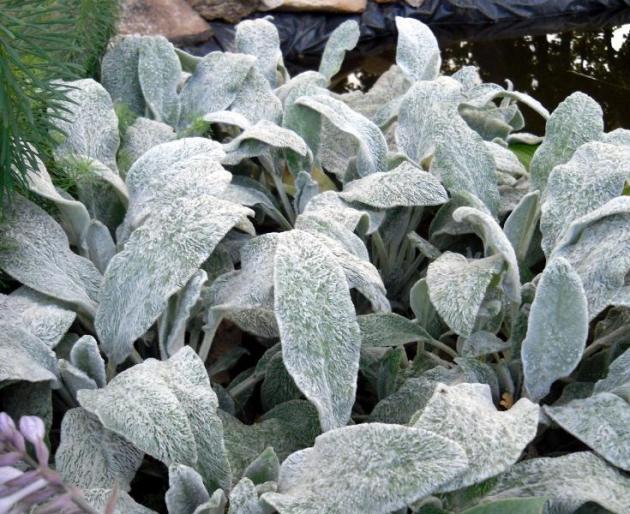
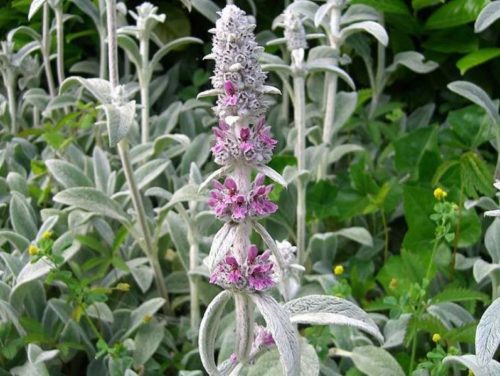
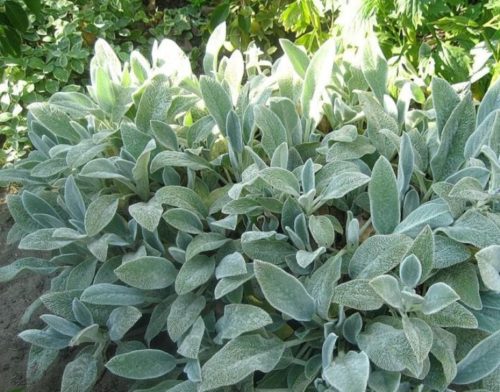
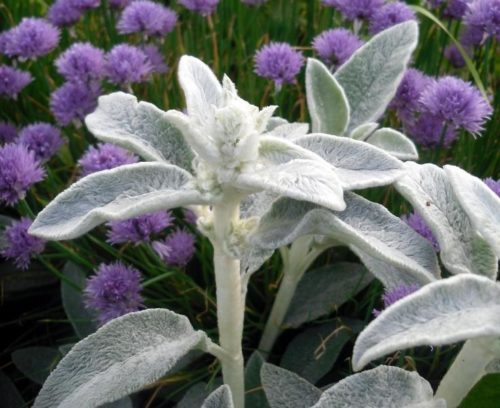

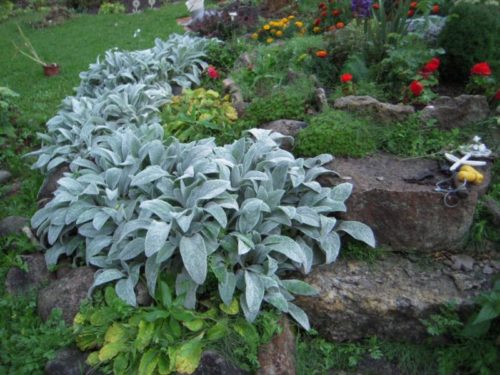
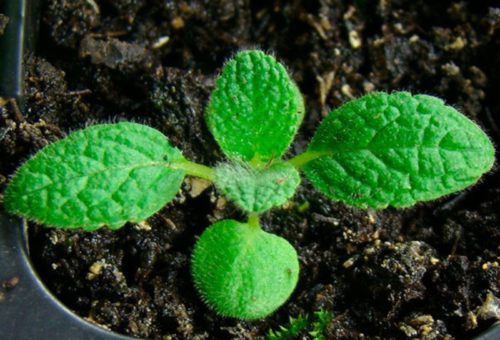
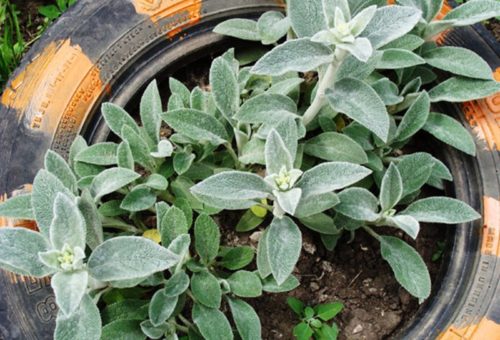
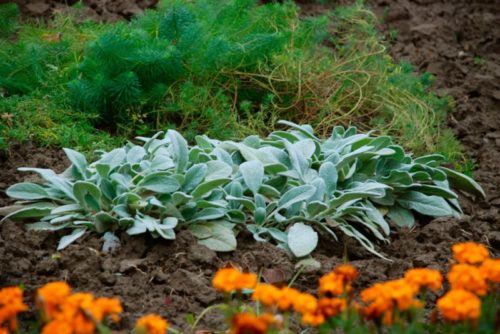
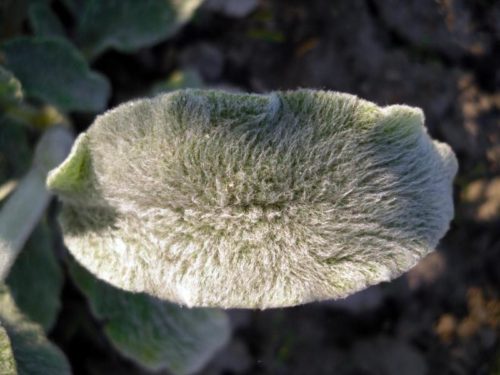
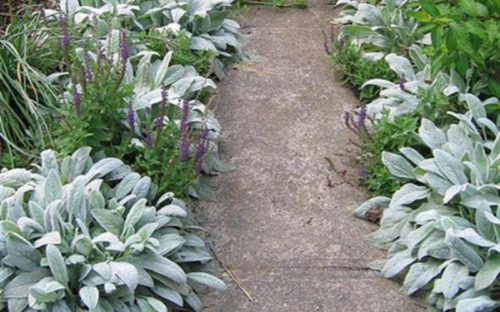
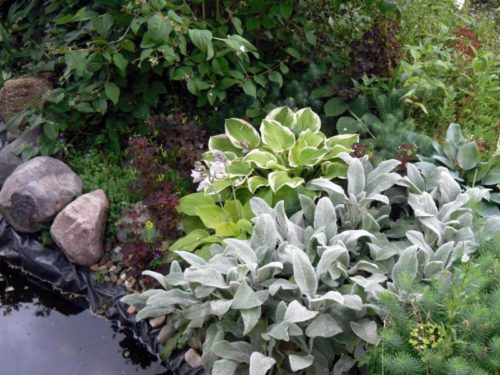
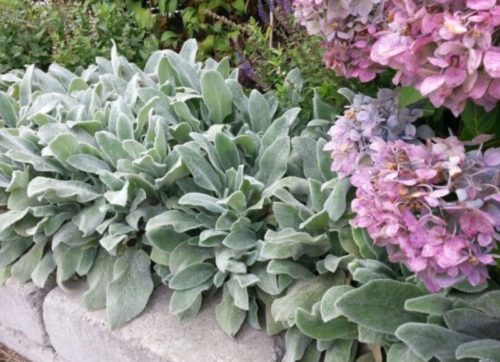
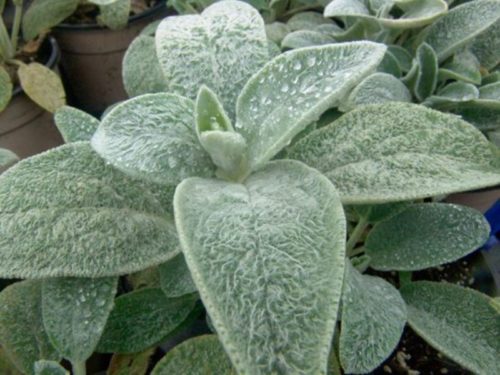
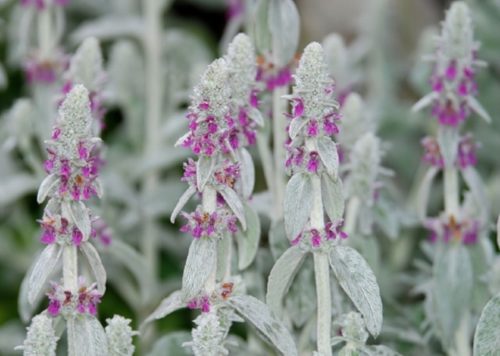












 Start a discussion ...
Start a discussion ...